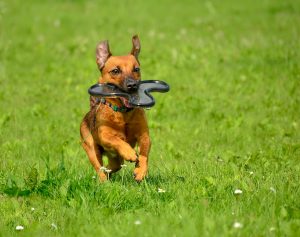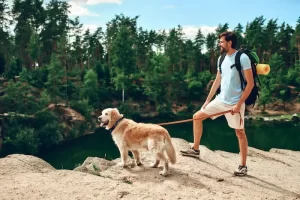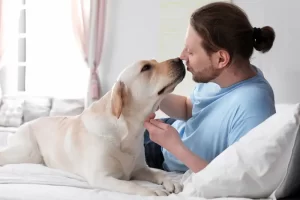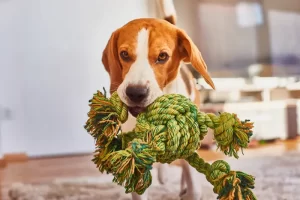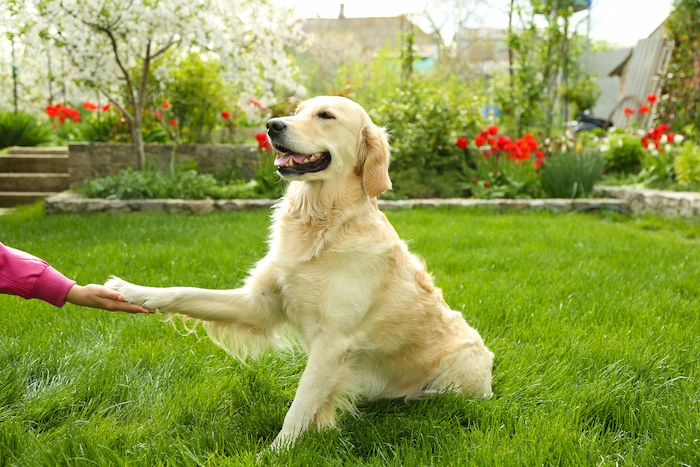
Imagine coming home after a long day at work and being greeted at the door by a firm handshake from your pup. Okay, your pup may not offer a steady handshake, but they can give you a cute pawshake that makes everything much better.
Teaching your dog to shake paws can have uses beyond being a cute trick. If your dog can shake on command, you can trim its nails, remove splinters, wash or wrap bandages around its paws with no fuss.
If you’ve never tried it before, you’re probably wondering how to teach a dog to shake paws. Fortunately, with a lot of love and a little patience, your dog can learn to shake with just a few training sessions. Here are steps numerous dog owners have used to get those awesome pawshakes from their furry friends.
What You Need for the Training Session
You need these things when teaching your dog to shake:
- Clicker. A clicker is an invaluable training tool because it tells your pup the exact behavior that’s being rewarded. Over time, your dog starts associating the sharp sound of a clicker with the correct behavior, making it easy for it to repeat the behavior during future training sessions.
- Reward. Positive reinforcement motivates dogs to repeat a desired behavior in subsequent training sessions. Dogs respond to different things, with the most common reward being tasty treats. However, some dogs prefer verbal praise, such as a hearty “Good boy!” while others enjoy receiving hugs or scratches.
- Patience. Teaching your pup to shake isn’t difficult. However, it can be frustrating at the beginning. Approach the training with a lot of patience, and be ready to conduct multiple sessions before your pup gets it. We recommend conducting 10-minute training sessions daily until your pup can shake when asked.
How to Teach a Dog to Shake

1. Teach the Sit Command
Your dog should already know how to sit on command before you start teaching it how to shake. You can train your pup to sit still until you tell it to stand using these steps:
- Hold a treat a few inches above your dog’s nose until it tries sitting to get a better look at it.
- Tell your dog “sit” once it starts to go down.
- Click and reward your pup once their bottom touches the ground. Repeat a few times, ensuring it can associate the command with the sitting action.
- In subsequent sessions, allow your dog to sit for a while before rewarding it.
- Once your dog understands how to sit still, take a few steps back and issue the sit command. This allows it to obey the order even without an immediate reward.
- Continue training your pup in different settings, including places with a lot of foot and vehicle traffic.
2. Show Them a Treat
Once your pup can sit on command, you can move on to shake training.
- Tell your dog to settle into a sitting position.
- Place a treat on your hand and let the pup see it by holding it at your dog’s chest level.
- Fold your palm into a fist, ensuring your pup knows there’s a treat inside. Some pups will start sniffing or licking your hand. If your dog paws at your closed fist, let it fully satisfy its curiosity before rewarding.
- Click and immediately reward your pup if your dog’s paw stays still on the hand with the treat.
- Repeat, allowing your pup to place one paw on your hand for longer durations before clicking and rewarding.
3. Introduce the Verbal Cue
It’s best to wait until your dog can completely rest its paw on your hand before introducing a verbal command. To introduce the verbal cue:
- Hold out the hand with the treat and wait until your dog lifts its paw.
- Say “shake” right before the paw rests on your hand. You can also use “paw” or “hand” as verbal cues.
- Click while saying “shake” and reward when your pup’s paw rests on your hand.
- Repeat, varying the reward pace to help your dog associate the “shake” command with the resting action.
- Once your dog can put its paw on your hand on command, you can move your hand up and down to simulate a handshake. Reward it if it doesn’t remove its paw from your hand.
- Repeat until your pup gets it.
4. Hold Out Hand Without Treat
Your pup must understand that it needs to shake your hand whether or not you have a treat. So, once it can respond to the verbal cue:
- Switch the treat to your other hand.
- Hold out the empty hand at your dog’s chest level.
- Initiate the verbal command.
- Click and reward with the other hand when your pup places its paw on your outstretched hand.
- Repeat, varying the reward pace until your pup can shake your hand even when not rewarded.
5. Switch Hands
Your pup may only shake with the paw you train it to. If you want to be able to hold both its paws in your hand on command, repeat the training steps with the other paw.
- Switch the treat to your other hand and reward only when it places a different paw on it.
- Repeat the steps to teach your pup to offer the paw closest to your outstretched hand — only reward if it reaches for your right hand with its left paw, for example.
You can also lift the treat hand higher to encourage your dog to lift its paw higher. Repeat these steps during future training sessions until your pup performs the desired action when you issue a shake command.
Find More Dog Training Tips
Over time, your pup can learn advanced commands and perform more fun tricks to entertain you and your loved ones. Using tried-and-tested dog training methodologies can improve the communication between you and your furry friend, making any future training session less frustrating for both of you.
The Halo Training Program stems from a thorough understanding of dogs’ natures, allowing you to expertly bring forth your dog’s full capabilities. Utilizing the program alongside the Halo Collar will help you and your dog build a strong, respectful and lasting connection.

